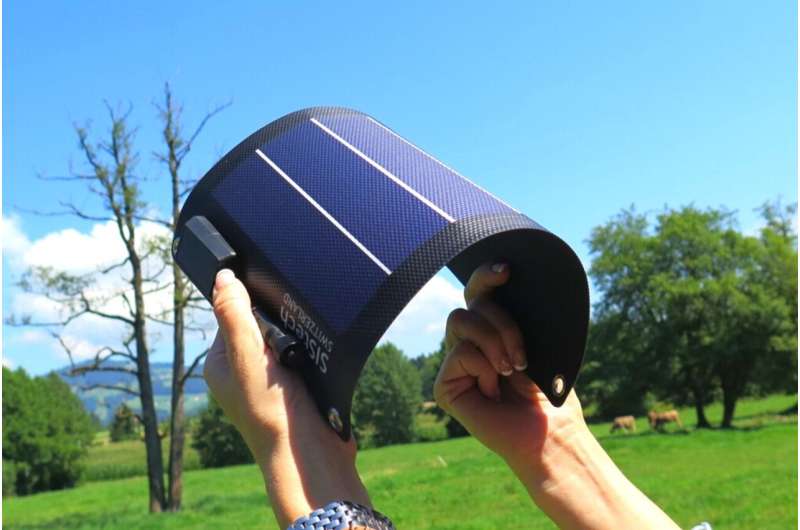This article has been reviewed according to Science X's editorial process and policies. Editors have highlighted the following attributes while ensuring the content's credibility:
fact-checked
peer-reviewed publication
trusted source
proofread
From cannabis harvest to flexible solar panels: Using organic electronics to develop next-gen devices

Organic electronics—electronics where the active material is carbon-based—are making possible diverse new technologies ranging from sensors for monitoring cannabinoid levels in cannabis plants to lightweight, bendable solar panels. Real-world applications could result in solar panels you roll up and take with you on your next camping trip, or cannabis producers knowing the optimal time to harvest plants.
Key to these advances is a class of substances called conductive polymers, which have good optical and mechanical properties but are cheaper to manufacture than conventional electronics, thanks to low energy requirements; they can be printed in long, thin sheets—like a newspaper—but don't require the same high temperatures (> 1,000°C).
Researchers from the University of Ottawa recently used the Canadian Light Source (CLS) at the University of Saskatchewan to study how different manufacturing processes can affect the performance of the resulting electronic devices.
"While these applications all sound really different, the reality they all have similar structures and need to be manufactured in similar ways," explained Benoit Lessard, University of Ottawa professor and Canada Research Chair in the Department of Chemical and Biological Engineering.
Using the Brockhouse beamline at the CLS, Lessard and his team have been able to examine—at a microscopic level—how the carbon molecules behave during manufacturing. What they're learning will have huge implications on how cutting-edge devices are manufactured, their size, flexibility, and electronic functionality. Their results are published in the journal ACS Applied Materials & Interfaces.
While the alignment of polymers doesn't affect the function or structure of larger, solid items such as plastic chairs, it's critical in building an electrical device like a continuous health monitor that wraps around your wrist.
"Some of these properties might not matter a lot when you're thinking of mechanical stiffness for commodity plastics, but it might matter a lot when you're thinking about electronic connectivity," he says.
Lessard explained that both the structure of the material and how it is being processed are critical when it comes to the functionality of the final product. The knowledge gained at the CLS will inform molecular design and manufacturing processes.
"Ultimately we're learning more about the manufacturing of these next-generation electronics and what we need to do to get the best devices possible."
More information: Laura E. Dickson et al, Blade Coating Poly(3-hexylthiophene): The Importance of Molecular Weight on Thin-Film Microstructures, ACS Applied Materials & Interfaces (2023). DOI: 10.1021/acsami.3c12335





















